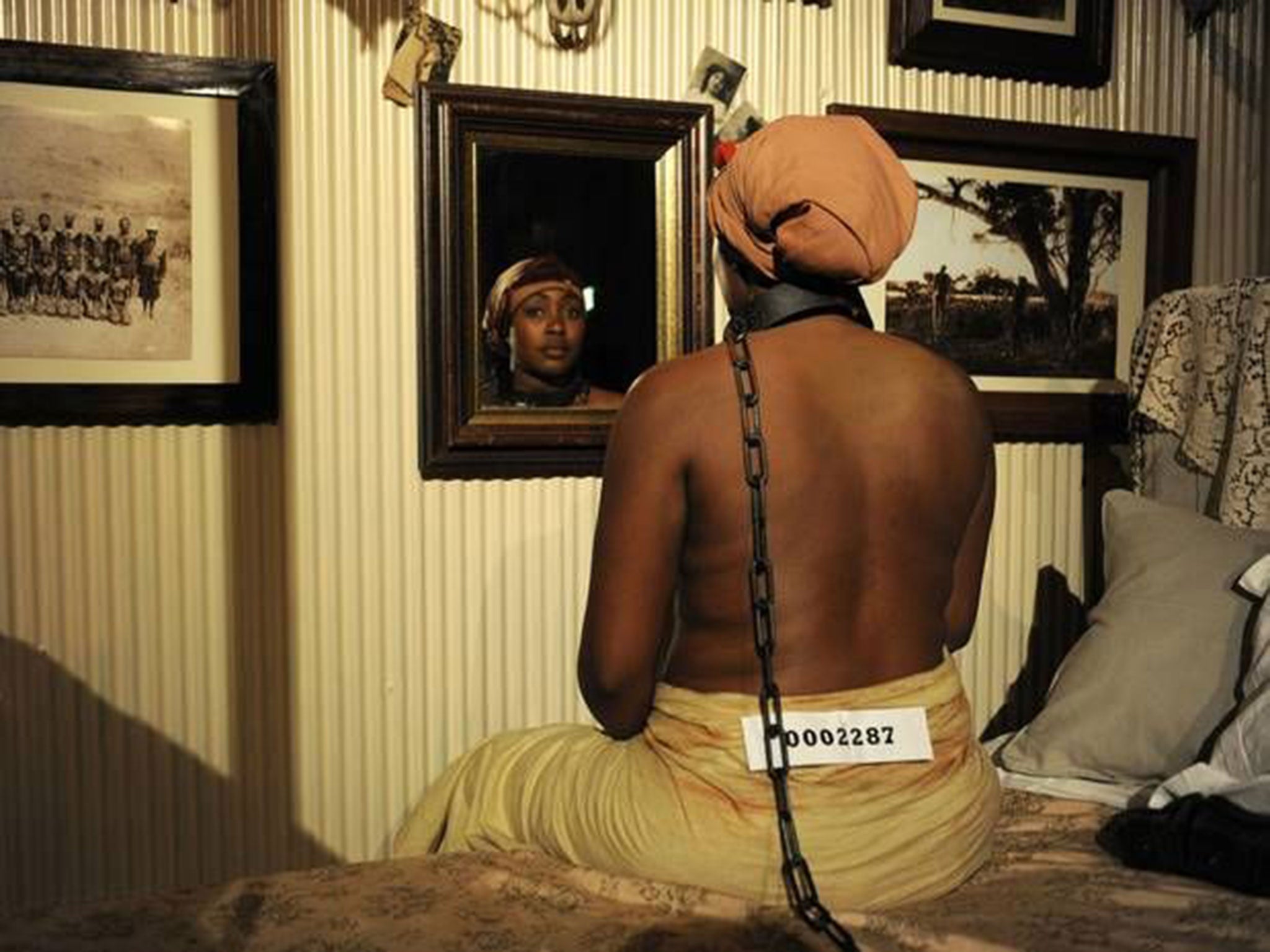Why is the depiction of black slavery considered art, and the protests against it censorship?
The controversy surrounding Exhibit B at the Barbican proves that some acts of free speech are considered more important than others

Your support helps us to tell the story
In my reporting on women's reproductive rights, I've witnessed the critical role that independent journalism plays in protecting freedoms and informing the public.
Your support allows us to keep these vital issues in the spotlight. Without your help, we wouldn't be able to fight for truth and justice.
Every contribution ensures that we can continue to report on the stories that impact lives

Kelly Rissman
US News Reporter
The white South African artist Brett Bailey's Exhibit B has been described by its black participants as "a powerful tool in the fight against racism". However, a petition calling the Barbican's decision to host the work as "an outrageous act of complicit racism", managed to gain over 20,000 signatures.
After 200 protesters blockaded the opening of the exhibition on Tuesday, the thousands that called for a boycott won some sort of victory, as the show was called off. However, this wasn't because of their demonstrations, but because the Barbican worried for the "safety of performers, audiences and staff".
It's important to come to terms with the kind of sentiment invoked when the ire of a protesting black crowd is seen as a risk to "safety". This is especially the case given that the protest was not a surprise mobbing of an innocent art event, but the culmination of a campaign that was demanding its stance against racism to be taken seriously.
But there is a wider point to be made too. Are we to lament Bailey being censored? The kind of critic who seeks to make this sort of claim is one who understands very little about racism, and yet those who defend Exhibit B as a piece of anti-racist artistic provocation have rallied to cry that art has been censored and freedom of speech has been curtailed.
This ignores the fact that censorship is not simply a case of pressing the mute button on something you don't like — it is a relation of power, much like racism itself. In the art industry it has everything to do with who gets to make the systematic decisions about who is exhibited where, and nothing to do with black protesters boycotting an event.
Two acts of free speech never collide harmoniously. In this case, one (Exhibit B) is toured around the world’s prestigious galleries and discussed and reviewed in the pages of art magazines. The other (the protest against it) is ignored by gallerists and has the police called in when it gets too close to the first. This imbalance is a problem that all those committed to art as a political act must contend with.
It seems like Exhibit B was offered its platform because it engages with race in way that is considered fit for a gallery. It turns its black participants into those objects, and audiences into spectators of those objects. But rather than offering a useful critical framework, it ends up representing the horrors of slavery, and reminds us of the current black struggle.
The act of representation is never neutral. Ask yourself, is there really such thing as neutrally displaying painful histories of oppression as controversial objects for consumption in a gallery?
Political artists working from positions of privilege should have a greater awareness of what it means to be less free. We need less works that are part of the system of oppression, and more that represent the struggle against it. Shutting down a racist exhibition isn't the sort of censorship we should be worried about. The real censorship we should be addressing is the systematic exclusion of the black struggle from the art industry.
Join our commenting forum
Join thought-provoking conversations, follow other Independent readers and see their replies
Comments